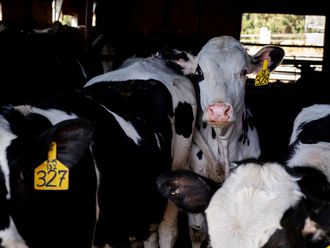Fray Bentos, Uruguay: A former pie factory in Uruguay may, at first glance, appear to have nothing in common with the Taj Mahal, the Acropolis or the Great Wall of China.
The hulking industrial ruins in Fray Bentos, a town facing Argentina on the Uruguay River, once produced the canned meat that fuelled Europe during the Second World War, fed the Everest pioneers and raised a future British King.
“I was brought up on it, I remember eating corned beef until it came out of my ears,” said the Prince of Wales, speaking during a visit to the town in 1999. Yet this week the rusting ruins could be declared a Unesco World Heritage Site, joining a list of 1,017 places around the world deemed to be “of outstanding value to humanity”.
The Fray Bentos site is one of 37 being considered by Unesco, which is holding its annual meeting in the German city of Bonn. Other candidates for the highly sought-after status include the ancient city of Ephesus in Turkey, a series of Viking sites across northern Europe, Genghis Khan’s birthplace in Mongolia, and the Forth Bridge in Scotland. Spain has petitioned the 21-member panel to include its Rioja region. On Saturday, it was announced that the proposal from Singapore to list its botanical gardens had been approved, to jubilation in the Asian nation.
Fray Bentos, which was launched as a brand in 1899, is best known for its range of canned meat pies, including steak and kidney and minced beef and onion. At its peak the meat factory would process 400 cows an hour, employ over 5,000 workers from more than 50 countries and revolutionise the standard of living for factory workers. With funding from Europe and high demand for its products, the Liebig Extract Meat Company, which produced the first pies, grew. In 1887 the factory had reached such a size that the mainly German and English workforce constructed their own district, complete with electricity and running water years before it was available in the capital, Montevideo. In 1943, with the factory now run by Anglo, more than 16 million cans of corned beef were shipped from the port of Fray Bentos to war-torn Europe - so in demand were the products, it made Uruguayan currency more valuable at the time than the US dollar. Yet the glory days of bully beef were not to last. In 1979, a few years after it was nationalised, the factory closed. It has reopened on a much smaller scale - operated by a Brazilian company - and Fray Bentos pies are still on our shelves. But now, they are made by the Scottish food company Baxters. The Unesco meeting ends on Wednesday. But that hasn’t stopped Tabare Vazquez, Uruguay’s president, organising a huge party on Tuesday - the final day of deliberation in Germany. Tango shows, fireworks and magicians will all be in place to celebrate. “Fray Bentos bears proud witness to the exchange of values and human relations between Europe and South America in the 19th and 20th century,” said Nicolas Pons, Uruguay’s delegate to Unesco. “It’s part of our human fabric.”
The Sunday Telegraph












